Poly CA22CD DECT Cordless PTT Adapter for Dispatchers – Poly 217100-01 or HP 8K774AA#ABA
The Poly CA22CD cordless PTT (Push-To-Talk) headset adapter part # Poly 217100-01 or HP 8K774AA#ABA provides wireless communications and PTT functionality for public safety dispatch, air traffic control, radio dispatch operations, and training simulation. This ultra-secure DECT wireless adapter is the perfect choice anywhere sensitive communications happen.
Relax knowing conversations are protected-designed to meet the highest-level DECT security Step C requirements. The CA22CD works with analog or USB interfaces, with options for one or two independent receive channels. Customizable configurations adapt to fit your communications network whether it’s analog or VoIP/RoIP.
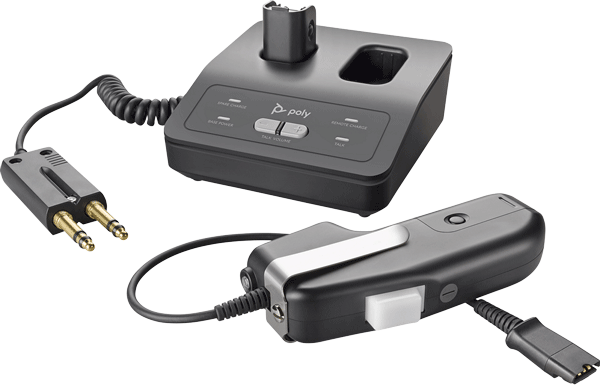
Poly CA22CD Cordless PTT (Single Channel) Features
- PTT (Push-To-Talk) switch with selectable locking or momentary operation
- Up to 3X less latency PTT (Push-To-Talk) than other models
- Spare battery pack for 24/7 operation
- Extended talk time for up to 10 hours
Ultra Secure Cordless PTT Base/Remote
Connects To
- Analog or USB connections to Voice Communication (VCS) Consoles
Recommended For
- Mission Critical Operations: Poly CA22CD Cordless PTT is for all radio dispatch and air-traffic control operations
Wireless
- Technology: DECT 6.0 (Band spectrum:1.92 – 1.93 GHz)
- Range: Line of sight up to 100 ft
- Security: Designed to meet Security step C – the highest level from the DECT Forum
- Encryption: Military level FIPS 140-2 listed 256-AES encryption
- Authentication: 128-bit AES
Battery
- Battery Capacity: 440mAH
- Talk time: up to 10 hours
- Spare battery for 24/7 operation
- Charge time: 2 hrs full charge
Receive Frequency Response
- Wideband 100 – 6800Hz
Hearing Protection
- Provided by Poly portfolio of Analog Headsets
Available Headsets
- Compatible with all Poly’s narrow band “H” and wideband “HW” type headsets including Controller Dispatch (CD) and EncorePro Series
Poly CA22CD Cordless PTT Remote Unit Features
- PTT button with momentary/locking selector
- Audio link On-Off button with LED
- Robust metal belt clip
- Receiving volume control
- 12 inch cable with Poly’s Quick Disconnect (QD)
Base Unit Features
- Two charging wells (unit supplied with an extra battery)
- Sending and receiving volume controls
- Microphone interface type settings
- Status LEDs for Power, Battery Charging and PTT
- Subscription button
- Analog and USB connection ports
- Operating temp. range: +40°F to +110°F
USB Enumeration
- The Push-to-Talk switch enumerates as button 1 of a single button game controller
Systems Supported
- Most manufacturers of Voice Communication Consoles, such as Frequentis, Indra, Sitti, Motorola, etc.
General
- HP SKU: 8K774AA#ABA
- UPC: 197497779820
- Formerly: 217100-01 (017229172869)
- Model: CA22CD-SC (Single Channel), CA22CD, CA22CD Single Channel, Poly CA22CD Cordless PTT
- Warranty: 2 Year limited
Poly CA22CD PTT Amplifier Replaced/Updated:
- Plantronics CA12CD-S PTT Adapter – SKU: 207799-01 (Formerly 92900-01)
What Comes In The CA22CD Box
- Hand held PTT unit (remote)
- Base unit
- Console interface cable
- Battery packs (2)
- AC power supply
- User Guide
CA22CD Amplifier FAQ’s
Is the CA22CD a replacement product?
- Yes, the CA22CD-SC is the replacement product for the CA12CD-S. The CA12CD-S has been discontinued.
Are the new CA22 CD spares backward compatible (ex: battery pack, remote, etc.)?
- Poly will continue to sell the CA12CD-S spares, but the new spares are not backward compatible with CA12CD-S.
How the Poly CA22CD-S Works
A typical configuration would consist of telephone calls coming into your console and answered using your keyboard/mouse. Once a call is answered, your caller will come through the CA22CD-S and into your headset, using the speaker and microphone. When you need to communicate with your personnel, you press/hold the white button on the CA22CD-S to key the radio. This process keeps your telephone caller active in your headset speaker, but mutes the microphone so they don’t hear you conversing with your personnel over the radio. Your personnel will be heard using speakers within your dispatch room. When you release the white button on the CA22CD-S, you will revert back to full communication with your telephone caller.
This process allows you to easily bounce back and forth with your telephone caller, and pressing the white push-to-talk button to converse with your emergency personnel.
Please note, dispatch consoles are very customizable and can be wired for specific needs and uses.
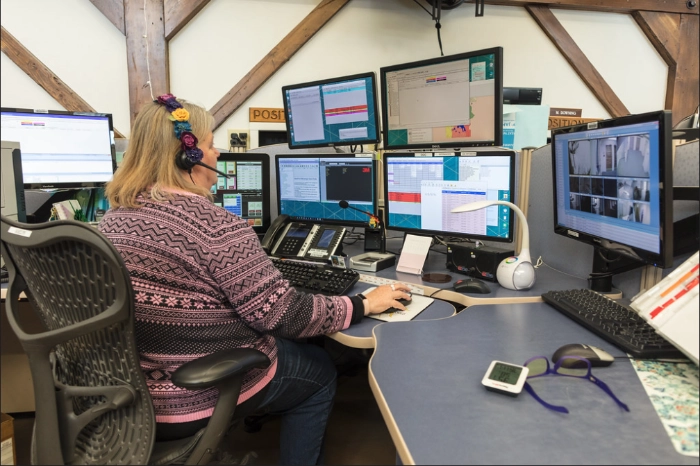
Versions
There are two primary versions of Model CA22CD: the single‐receive‐channel version, which is the direct replacement for Model CA12CD‐S, and the new dual‐receive‐channel version that Poly has created for voice systems that require dual‐channel headsets and adapters.
The single‐channel version is Model CA22CD‐SC and the dual‐channel version is Model CA22CD‐DC. Both of these variants are available with either DECT radios for regions like the European Union or DECT 6.0 (a.k.a. UPCS which is Unlicensed Personal Communications Services 1920‐ to 1930‐MHz band for use in North America) radios for use in the US, Canada, and Mexico.
CA22CD Compared to CA12CD‐S
The basic functionality of Model CA22CD is the same as Model CA12CD‐S, so users who are familiar with Model CA12CD‐S will be able to quickly get up‐and‐running with Model CA22CD. As can be seen in the figures below, we have taken this opportunity to refresh Model CA22CD’s industrial design. We have also added a couple of new features. They are:
- A USB port to enable use with PC‐based communications systems and training simulators.
- Dual‐receive‐channel capability: an optional dual‐receive‐channel remote and a second receive channel in the base. The new base automatically configures itself for either single‐ or dual‐channel operation depending upon which remote is subscribed to it.
Also, the PTT latency (time for a PTT button‐press to be communicated to the host equipment) has been greatly reduced and is now under 36 milliseconds.
An additional improvement is that encryption has been increased from 64 to 256 bits.
Functional Description
- The Model CA22CD is a cordless push‐to‐talk (PTT) headset adapter for providing wireless communications and PTT functionality to public‐safety‐dispatch, air‐traffic‐control, and other facilities that employ integrated telephone and radio communications.
- Consisting of a base and a remote, Model CA22CD has a Quick Disconnect™ connector (for single‐channel systems) or a Switchcraft TA6FLX connector (for dual‐channel systems), a console‐interface cable, and an ac adapter. The single‐channel remote is compatible with all Poly H‐ and HW‐ series headsets, and the dual‐channel remote works with Poly’s dual‐channel headsets.
- Model CA22CD’s audio link is intended to be on whenever the base and subscribed remote are powered up, so that the mic is always “hot.” The PTT button is used solely for “keying up” the host‐equipment’s communications radio, and it has no effect upon the status of the audio link.
- The audio link stays active even when the remote is docked in the base, so that the remote can be used in emergency situations where there is no time to recharge a depleted battery. (Note that Poly recommends avoiding this scenario by regularly swapping batteries about every four hours.)
- The base has two charging wells, send‐ and receive‐gain controls, status LEDs, and a ten‐foot (extended length) coil cord with a choice of connectors for customers with analog headset interfaces. For voice systems with USB interfaces, Model CA22CD can be ordered with a USB cable.
- The charging wells accommodate the remote and a spare battery pack. The LEDs show the state of the battery charge and the status of the power, the link, and the PTT switch. The send (talk‐volume) controls consist of a four‐position slide switch on the underside of the base to emulate the outputs of different microphone types and talk‐volume fine‐adjust buttons on the top of the base.
- The receive‐sensitivity controls consist of a four‐position slide switch on the underside of the base that selects among four different gain ranges and a receive‐sensitivity fine‐adjust rocker switch on the remote.
- The typical PJ‐7 cable‐and‐connector assembly is wired with send on the connector tips, receive on the sleeves, and push‐to‐talk on the rings. When the user presses the PTT switch on the remote, a relay is closed in the base that places a short circuit across the PJ‐7 rings.
- This short circuit “keys up” the communications console to which the Model CA22CD is connected and allows the user to transmit over the host equipment’s radio. Console‐interface cables with connectors other than the PJ‐7 work on the same principles, with send, receive, and PTT configured for compatibility with the host system.
- For voice systems with USB interfaces, Model CA22CD enumerates as a composite audio device and game controller that uses standard operating‐system drivers. The PTT button appears to the host system as Button 1 of a single‐button game controller. (The host‐system software must be capable of reading and using this button press.)
- In addition to the PTT switch, the remote has an on‐off switch with incorporated LED, a metal belt clip, a receive‐sensitivity fine‐adjust control, and a twelve‐inch cable terminated in a either a Poly Quick Disconnect™ connector for single‐channel systems or a Switchcraft TA6FLX connector for dual‐channel systems.
- The technology of Model CA22CD, including the new radio chipset and surrounding architecture, is based on field‐proven DECT products that are in use by the thousands throughout the world.
- Like Model CA12CD‐S, the new Model CA22CD is a medium‐range system that uses the DECT 6.0 (Digital Enhanced Cordless Telecommunications) standard to operate in the Unlicensed Personal Communications Services (UPCS) 1920‐ to 1930‐MHz band for use in North America.
- For use in regions such as the European Union and Australia, Model CA22CD is configurable through production‐line EEPROM settings to operate in the DECT frequency band of 1880 to 1900 MHz. The DECT protocol is used for its power efficiency, which allows extended operation from a relatively small battery pack.
- The Model CA22CD variants that are sold outside of North America use ten carrier frequencies, which accommodate a total of 120 duplex channels. To operate in the narrower US UPCS band, Model CA22CD uses five carrier frequencies, with a total of 60 duplex channels.
Technical Features:
Options
- Choice of single‐channel remote or the new dual‐channel remote for use with dual‐channel voice systems
- Wide variety of console‐interface cables and connectors for compatibility with almost any voice‐communications system
- Secure‐voice operation (programmed at the factory), in which the microphone is muted by default until the PTT button is pressed
- Serialized USB “friendly name” (programmed at the factory) for easy identification of multiple CA22CDs connected to the same host PC
Controls
- Push‐to‐talk (PTT) button on the remote
- Receive‐volume fine‐adjust rocker switch on the remote
- On‐Off (link‐enable) button with integrated green link‐status LED, located on the remote
- Talk‐volume fine‐adjust buttons on the base (also used for subscription)1
- Receive‐volume coarse‐adjust switch on the underside of the base1
- Talk‐volume coarse‐adjust switch on the underside of the base1
- Subscription button on the back of the base
Visual Indicators
- Link‐status LED, remote
- Subscription‐mode indication, remote
- Subscription‐mode indication, base
- Battery‐charging indications, base, two each
- System‐power indication, base
- Talk LED, base, to indicate closure of the remote’s PTT switch
Audible Indicators
- Low‐battery earcon
- Receive‐volume fine‐adjustment earcons
- Talk‐volume fine‐adjustment earcons1
- Loss‐of‐link (traffic bearer) earcon
- Returning‐in‐range earcon
Electrical and RF Features
- Modular eight‐position jack for connection to analog host equipment (Model CA12CD‐S’s jack is six‐position; we’ve added two contacts to accommodate the optional second receive channel.)
- New USB port for use with PC‐based voice systems and training simulators
- Carbon‐, electret‐, and dynamic‐mic emulation (analog‐host connections only)
- Over‐the‐air (OTA) subscription of remote to base. (The remote does not need to be docked in the base.)
- Battery talk time greater than eight hours with ten hours typical for single‐channel operation
- AES‐256 encryption
1 The talk‐volume fine‐adjust buttons, the talk‐volume coarse‐adjust switch, and the receive‐volume coarse‐adjust switch are only active when the base is plugged into an analog host. These controls are not active in the USB interface. When connected to a USB host, talk and receive volume can be controlled in the host PC, and receive volume can be fine‐tuned with the receive‐volume fine‐adjust rocker on the remote.
CA22CD Controls
| Name | Location | Type | Function |
| Push to Talk (PTT) Switch | Remote | Leaf switch | Keys‐up the host‐equipment radio |
| Locking‐Momentary Selector | Remote | Mechanical | Enables or disables locking operation of the PTT switch |
| On‐Off | Remote | Pushbutton with integrated green LED | Turns the audio link on and off (default is on) |
| Receive-Sensitivity Fine Adjust | Remote | Rocker switch | Adjusts the receive sensitivity in 2‐dB steps |
| Receive-Sensitivity Coarse Adjust | Base (bottom) | Four‐position slide switch | Adjusts the receive sensitivity in 6‐dB steps |
| Send‐Sensitivity Fine Adjust | Base (top) | Momentary pushbuttons (one Up and one Down) | Adjusts the send sensitivity in 2‐dB steps |
| Send‐Sensitivity Coarse Adjust | Base (bottom) | Four‐position slide switch | Adjusts the send sensitivity to emulate carbon‐, electret‐, or dynamic‐mic outputs |
| Subscription | Base (back) | Momentary pushbutton | Subscribes a base to its remote |
Visual Indicators (LEDs)
Model CA22CD has one LED in the Remote and four LEDs in the Base
| Name | Location | Qty | Color | Aspect |
| On‐Off | Remote, integrated into the On‐Off switch | 1 | Green | 1) 1‐Hz blink to indicate that the audio link between the Remote and the Base is enabled 2) On steadily when the remote is in subscription mode |
| Power | Base | 1 | Green | 1) On steadily when the Base is connected to power via the ac adapter 2) 1‐Hz blink to indicate subscription mode |
| Talk | Base | 1 | Green | On continuously when PTT button is depressed, otherwise off |
| Charge | Base | 2 | Orange/Green (CA12CD‐S is orange only) | 1) 1-Hz blink orange while battery is charging 2) On continuously green when battery is fully charged 3) 6‐Hz blink if charger contacts are shorted |
Audible Indicators (Earcons)
Audible indicators used in Model CA22CD
| Event | Description |
| Receive‐volume fine adjustment | One musical note per step, from E6 (1318.50 Hz) to E7 (2637.00 Hz) |
| Send‐volume fine adjustment | One musical note per step, from E6 (1318.50 Hz) to E7 (2637.00 Hz) |
| Out of range | Triple beep (3 beeps) |
| Return in range (link was active prior to moving out of range) | Single beep (1 beep) |
| Low battery | Single beep every ten seconds for five minutes, followed by shutdown |
| On‐off button press | Single beep (1 beep) |

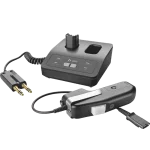
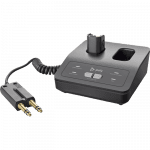
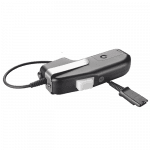
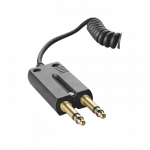
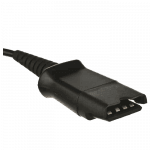
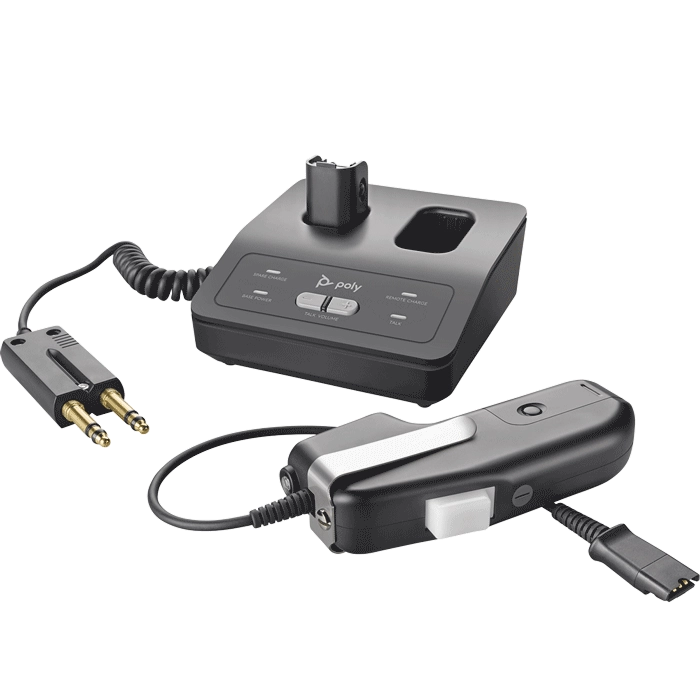
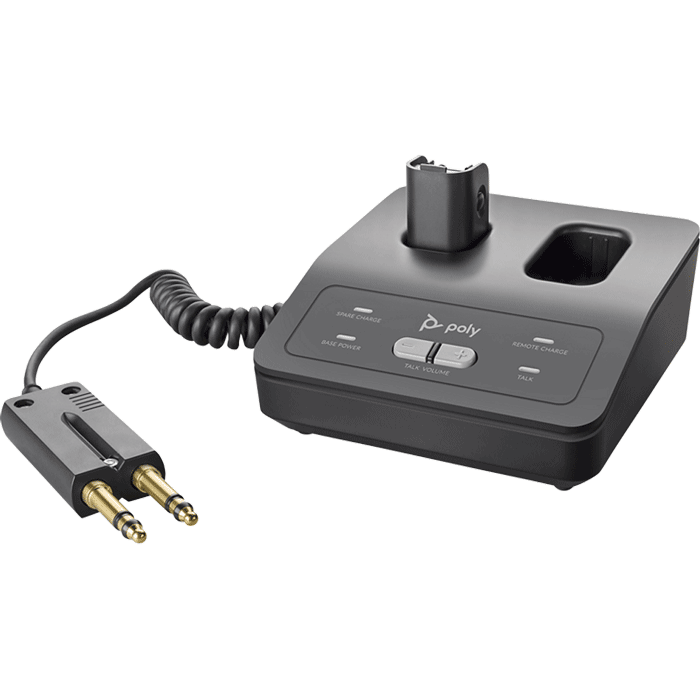
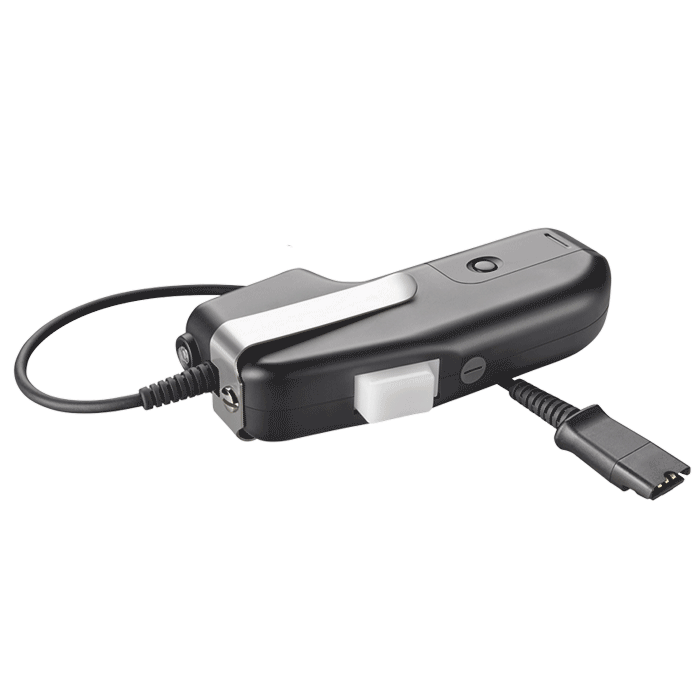

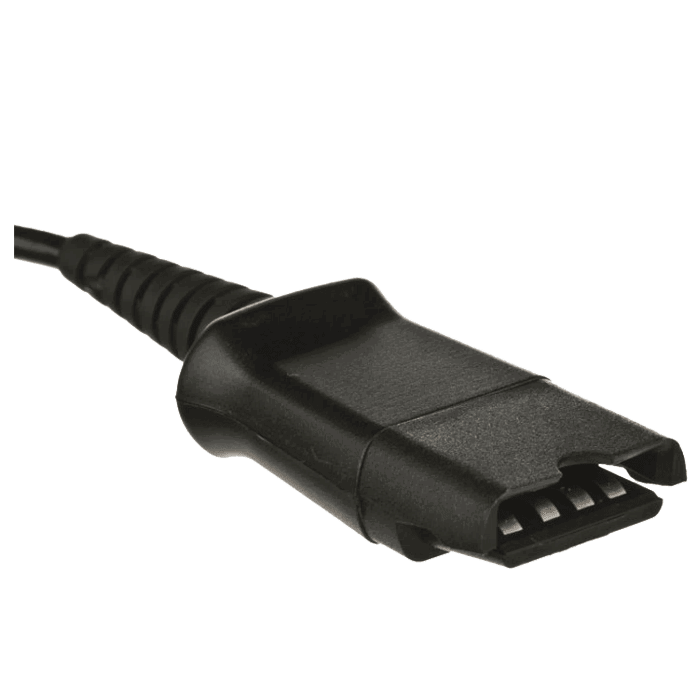
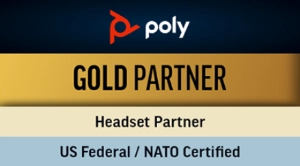

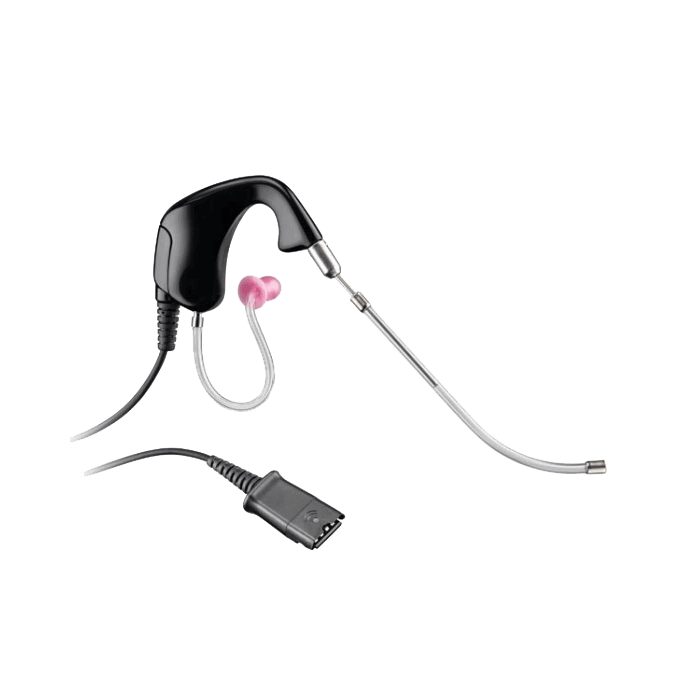
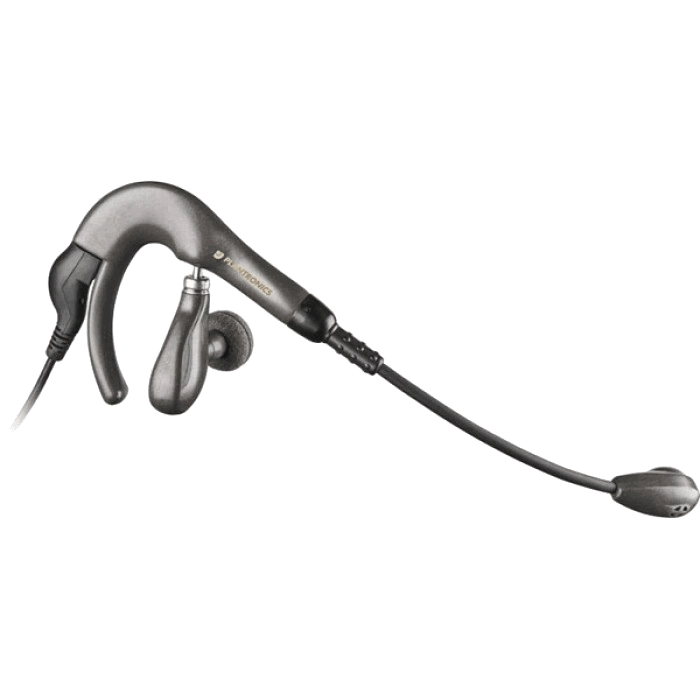
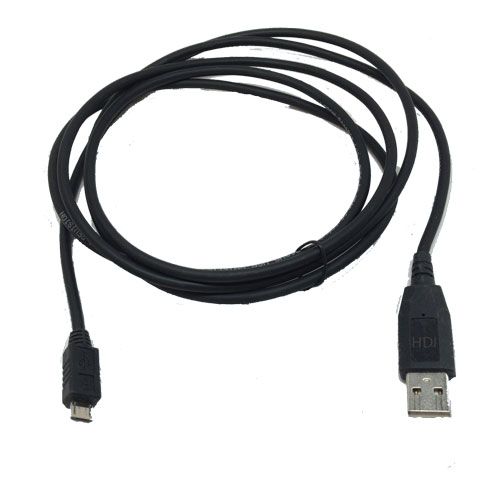
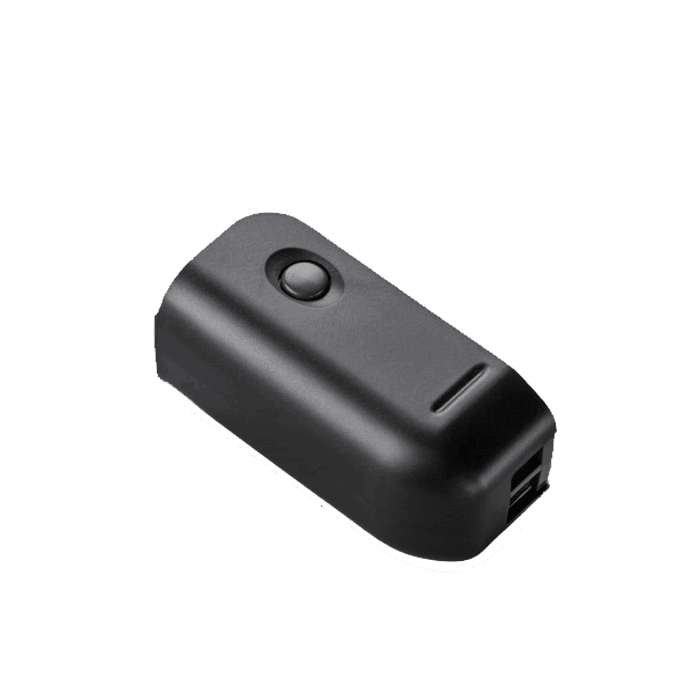
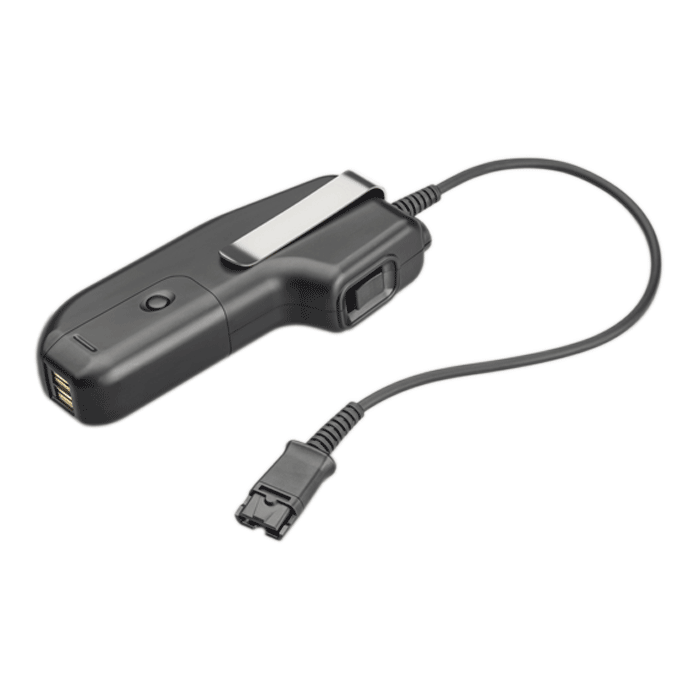
Meghan Duerst –
Good morning Kim,
We are still waiting to receive your CA22CD & CA12CD remotes from the manufacturer, Poly. There has been a delay in receiving components along with a severe supply chain shortage that is slowing manufacturing. In addition, with HP’s purchase of Poly, they are in a transition period adding to the delays.
Together, these circumstances have created a situation wherein Poly cannot keep up with the increased volume of orders.
All Authorized Poly Dealers are in the same situation and pull from the same Plantronics/Poly warehouses, so the situation does not only affect Headsets Direct’s customers.
At this time Poly is estimating a ship date of 11/3/23 & 11/16/23 respectively, but we are unable to guarantee it.
Estimated dates may be pushed back for weeks before products actually ship due to severe supply chain shortages. Once your order ships, we will email the tracking information to you.
If you are unable to continue waiting, please give us a call and one of our customer service representatives will be happy to discuss alternative solutions with you.
Thank you for your patience and rest assured that the staff at HDI is striving to get you the product you need as quickly as possible. Have a great day!
Best Regards,
Meghan Duerst